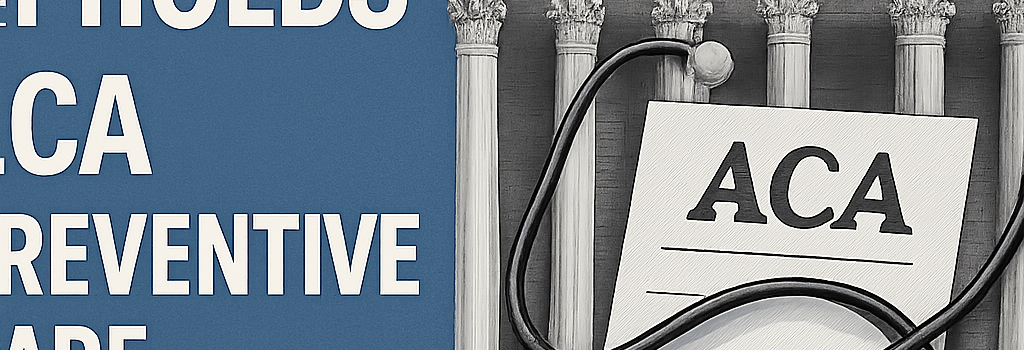SCOTUS Upholds ACA Preventive Care Mandate

By Beth Mole – Jun 27, 2025
Overview of the Ruling
In a landmark 6–3 decision on June 27, 2025, the U.S. Supreme Court reaffirmed a core provision of the Affordable Care Act (ACA) that mandates health insurers provide a suite of preventive services at no cost to patients. The Court’s majority, led by Justice Brett Kavanaugh, held that members of the U.S. Preventive Services Task Force (USPSTF) are properly appointed and supervised by the Health Secretary, preserving constitutional chain-of-command under Article II.
Covered Preventive Services
The ACA requires A and B recommendations from the USPSTF to be fully covered. Key services include:
- Cancer screenings (mammography, colonoscopy with high-definition imaging and AI-assisted polyp detection)
- Cardiovascular risk management (statin therapy guidelines based on Framingham Risk Score models)
- Infectious disease prevention (PrEP for HIV, HPV and hepatitis vaccines)
- Childhood health (well-child visits with developmental screenings, fluoride varnish using LED curing lights)
- Reproductive health (all FDA-approved contraceptives, emergency contraception coverage)
Legal Background
The lawsuit, filed by Braidwood Management on behalf of conservative plaintiffs, challenged the USPSTF’s authority under the Appointments Clause, asserting that the panel’s members were “unconstitutional policymakers.” Lower courts in Texas agreed, citing lack of Senate confirmation. The Supreme Court’s reversal clarifies that the Task Force operates under direct oversight of the HHS Secretary—currently Robert F. Kennedy Jr.—and thus meets constitutional requirements.
Section Expansion: Technical Underpinnings of USPSTF Recommendations
The USPSTF employs a rigorous evidence-based framework:
- Systematic reviews using GRADE methodology for quality-of-evidence grading.
- Decision-analytic modeling to estimate quality-adjusted life years (QALYs) and cost-effectiveness ratios ($/QALY).
- Data integration pipelines leveraging HL7 FHIR standards for real-world data from electronic health records.
“Our models incorporate both clinical trial data and observational studies, processed through machine-learning algorithms to predict population-level outcomes,” says Dr. Maria Chen, biostatistician at Stanford University.
Implications for Digital Health and Data Security
With increasing reliance on telehealth platforms and AI-driven diagnostics, integrating preventive care aligns with initiatives such as SMART on FHIR apps and ONC-certified 2015 Edition EHR standards. However, safeguarding patient data remains paramount:
- End-to-end encryption (TLS 1.3) for telehealth consultations.
- Role-based access control (RBAC) for EHR modules storing screening results.
- Compliance with HIPAA Privacy and Security Rules, including audit logging and data loss prevention.
Future Outlook and Expert Opinions
Health policy analysts warn that Secretary Kennedy’s recent reorganization of the CDC’s vaccine advisory board could foreshadow similar interventions at the USPSTF. “Continuous political pressure may affect the independence of scientific panels,” notes Dr. Allen Brooks of the Brookings Institution. Meanwhile, lawmakers in Congress are drafting bipartisan legislation to codify USPSTF authority and strengthen insulation from political swings.
Conclusion
The Supreme Court’s decision secures free access to essential preventive services for millions, while emphasizing the need for transparency and robust governance of federal health advisory bodies. As digital health technologies evolve, stakeholders must balance innovation with rigorous oversight to protect public health and data integrity.